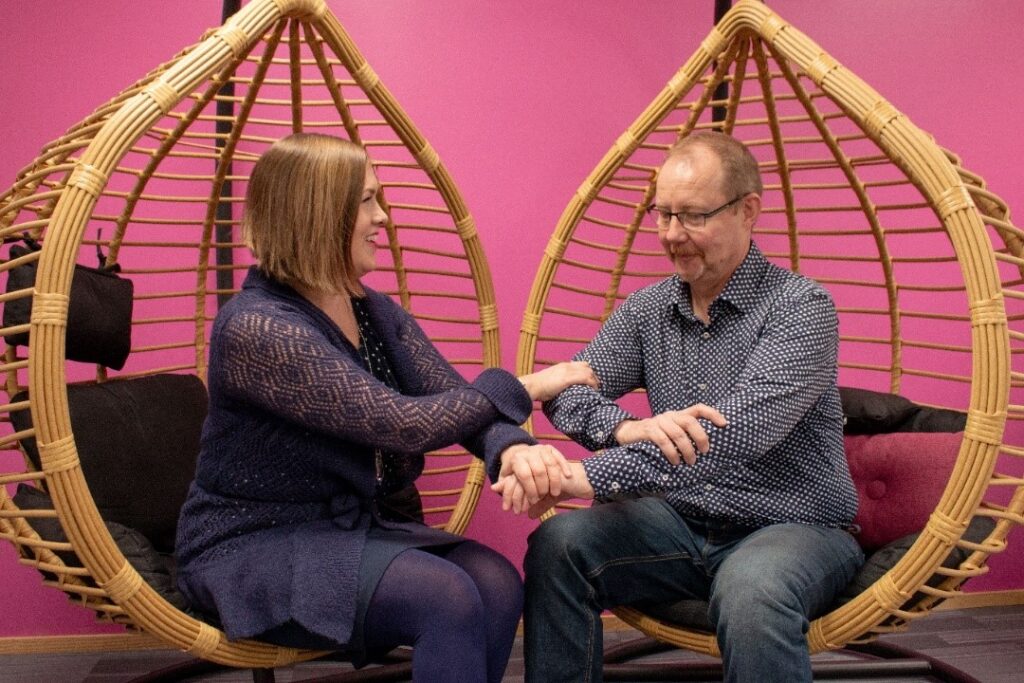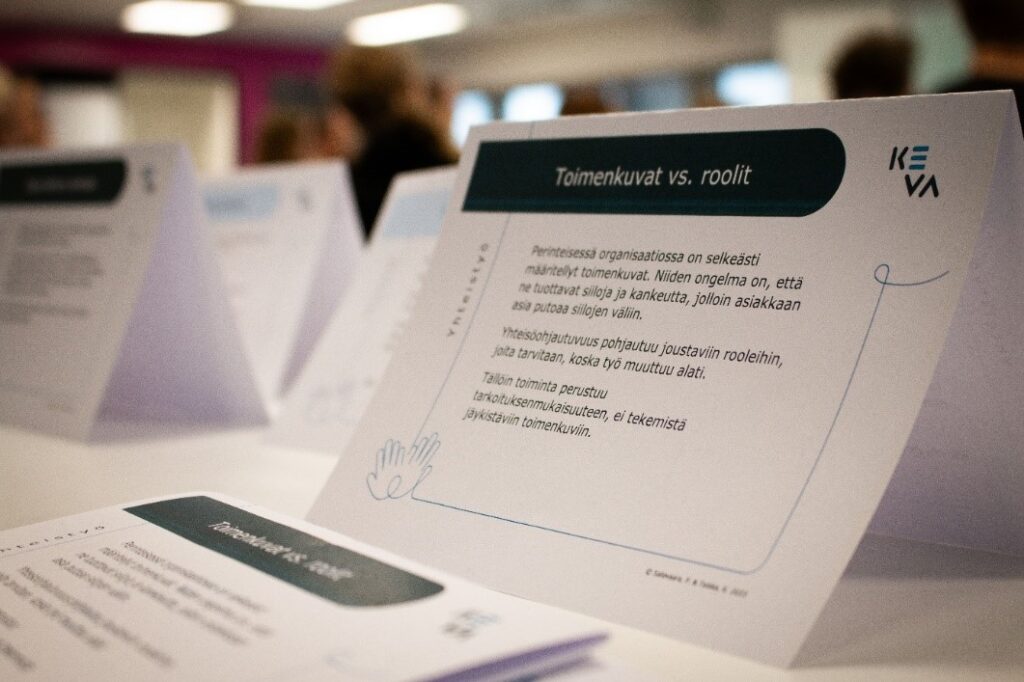
Society has operated according to the principles of hierarchy for centuries. The valuation of people has become so deeply ingrained in our lives that we hardly even consider how naturally it has become a part of our everyday existence. However, today’s changing environment means that the old-fashioned way of top-down leadership doesn’t always work anymore.
– Modern workplaces are now required to be adaptable to changing situations. Hierarchy is not designed for flexibility or responsiveness. Self-directed teams allow organizations to be flexible. At its best, it can harness people’s skills and insights into reality. The underlying idea of this model is to support human agency, says researcher and docent Perttu Salovaara.
Salovaara bases his thinking on an old view, already presented during the Enlightenment, that people should be encouraged to think for themselves instead of always relying on external authorities.
– Research shows that commitment to work is much stronger when employees are involved in shaping their own work life and the development of their work community, bringing in their own perspectives. Self-directed teams are fundamentally about the value of the individual—about trusting in their expertise.

A Functional, Sustainable, and Humane Working Life
Buurtzorg, a Dutch home care provider with 14,000 employees, is perhaps one of the most well-known self-directed companies. It is an example of radical self-organization, where nursing teams independently manage their clients, plan their operations and work schedules, recruit new employees, build regional expert networks, and rent facilities for their teams. As a result of this reorganization, Buurtzorg has achieved higher customer and employee satisfaction, reduced staff turnover and absenteeism, and increased productivity.
Inspired by Buurtzorg, the home care services in the city of Järvenpää also decided to develop their work towards self-direction. This led to the creation of the book ”Itseohjautuvaa yhteispeliä – Oivalluksia ja oppia Järvenpään kotihoidon pilottihankkeesta” (Self-Directed Teamwork – Insights and Lessons from Järvenpää’s Home Care Pilot Project), which examines the phenomenon of self-direction from the perspective of those involved in the pilot project in Järvenpää. The book also sheds light on the connections between coaching leadership and self-direction through practical examples.
– “During the home care pilot project in 2017, my colleague realized that I would be a good fit to build the final product of the project because of my skills in solution-focused work, change coaching, and writing. I became interested in the topic, although at first, I had no idea what self-direction and community self-direction meant,” says Kati Toikka, Development Manager for the City of Järvenpää.
Self-direction and community self-direction were new concepts for Toikka, and she had to immerse herself in them deeply. As she learned more, she realized that this was the common denominator for creating a functional, sustainable, and humane working life, where mindfulness is present.
Since then, many companies across Finland have shown interest in this new model of organization. Toikka and Salovaara have been able to work full-time in their respective roles with self-direction. Salovaara is conducting research on the progress of grassroots initiatives within organizations, while Toikka is responsible for ensuring the implementation of self-direction in the City of Järvenpää. Currently, there is a pilot project in early childhood education in Järvenpää. Additionally, self-direction experiments are being conducted in corporate services, among other areas.
– “We are also collaborating on the ‘Paths to Community Self-Direction in Elderly Care’ project, which is based in Northern Savo,” Toikka says.

Community Self-Direction on Many Levels
Salovaara is often asked whether community self-direction is suitable for everyone. The answer is: of course not. But is hierarchy suitable for everyone? The answer is: of course not. This is because there is no single model for organizing human work that fits all situations and lasts forever.
– “Hierarchy is rarely questioned, even though when a person signs an employment contract, they give up their own time and the freedom to choose whom they collaborate with,” Salovaara says.
According to Toikka, community self-direction, unlike hierarchy, is not a black-and-white way of operating; rather, it can be adapted to what best suits each work community.
– “Community self-direction can be discussed on many different levels and in various ways. For example, top-down management can be reduced, or leadership can be shared as collective intelligence. In any case, the journey towards community self-direction is a cultural revolution at the level of interaction, involving changes in structures, work processes, and ways of thinking,” Toikka notes.
INFO BOX
Self-Direction = An individual’s ability to act independently without the need for external guidance and control.
Community Self-Direction = A work community that operates without leaders, where the structure, practices, and culture support democratic collaboration.
In addition to self-direction, we are also community self-directed.
Read more about the topic at www.jarvenpaa.fi/itseohjautuvuus
Sources:
Gamrasni, Mirjam (toim.) 2021: Matkaopas yhteisöohjautuvuuteen. Newprint Oy, Raisio.
Laaksonen, Merja 2022: Itse- ja yhteisöohjautuvuus – uuden työntekijän kokemuksia arjesta, jonka taustalla vaikuttavat tutkitut teoriat. Filosofian Akatemia, Helsinki. Julkaistu 29.3.2022.
https://filosofianakatemia.fi/blogi/itse-ja-yhteisoohjautuvuus-uuden-tyontekijan-kokemuksia-arjesta-jonka-taustalla-vaikuttavat-tutkitut-teoriat/. Viitattu 4.4.2024.
Toikka, Kati (toim.) 2018: Itseohjautuvaa yhteispeliä – Oivalluksia ja oppia Järvenpään kotihoidon pilottihankkeesta. Järvenpään kaupunki.
Authors:
Jaana Piippo, Lecturer and Workplace Mentor, Savon Vocational College, jaana.piippo@sakky.fi
Maiju Korhonen, Communications Specialist, Savonia University of Applied Sciences, maiju.korhonen@savonia.fi
Images:
Maiju Korhonen, Communications Specialist, Savonia University of Applied Sciences, maiju.korhonen@savonia.fi
